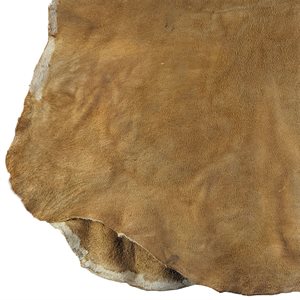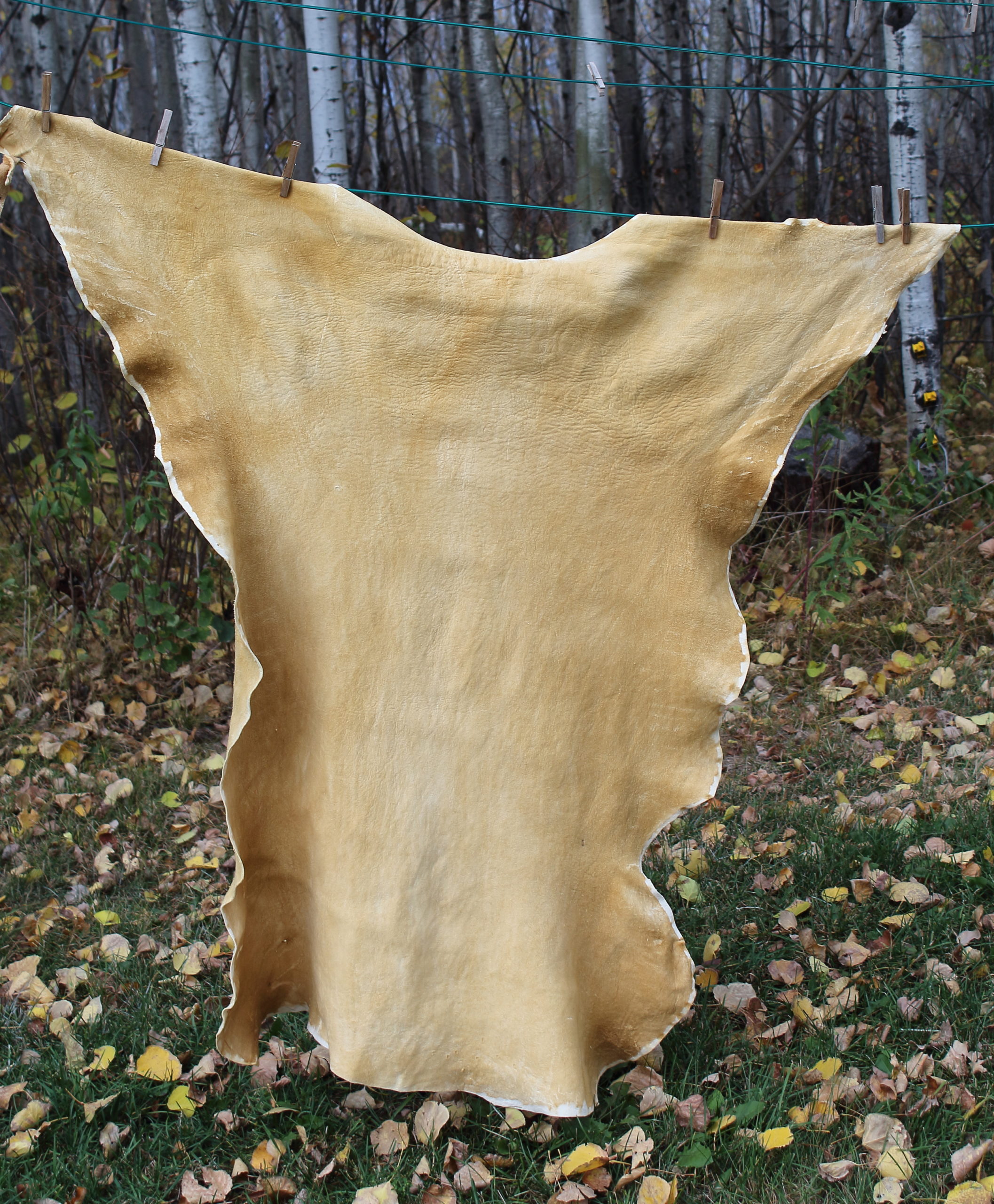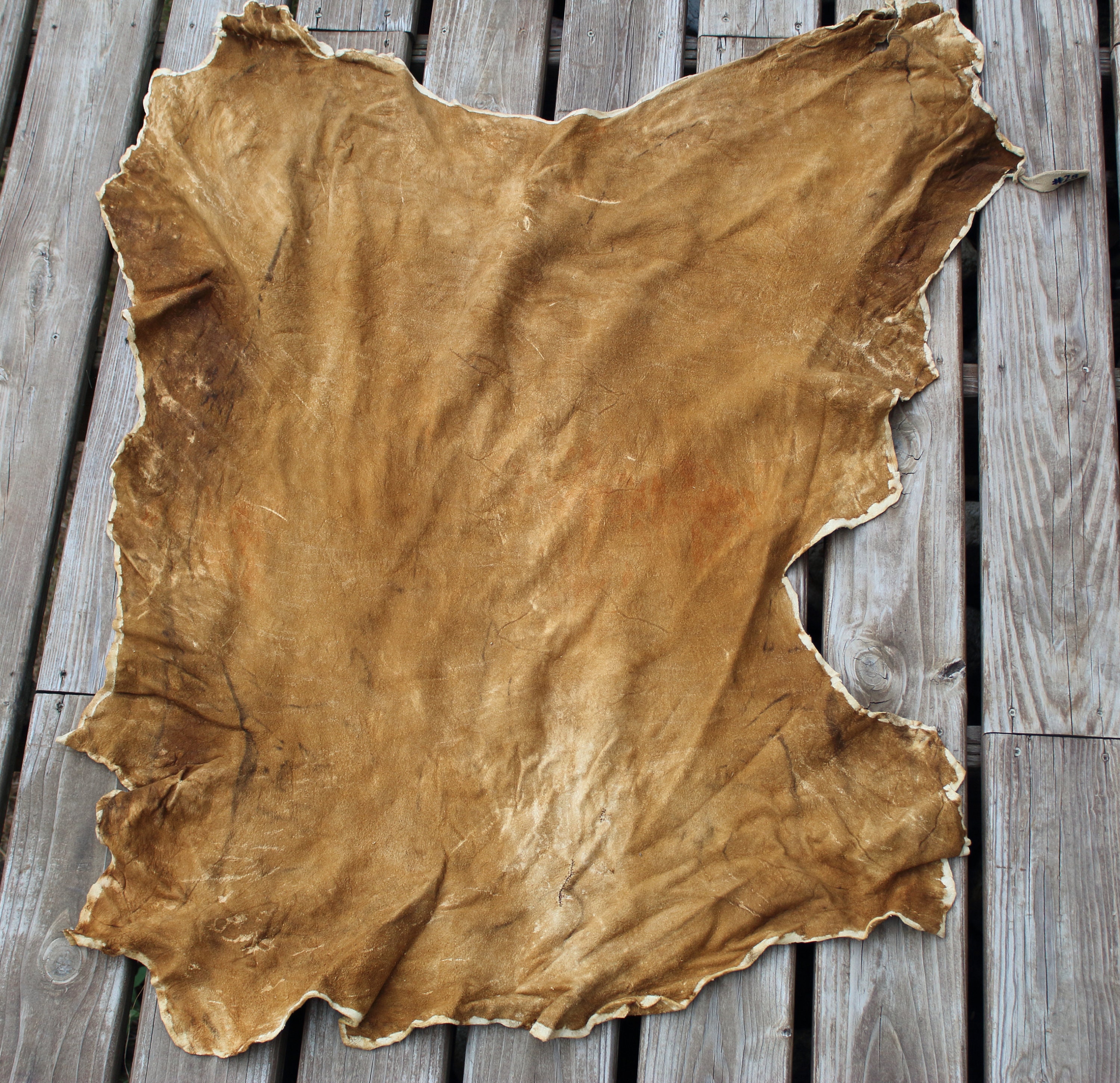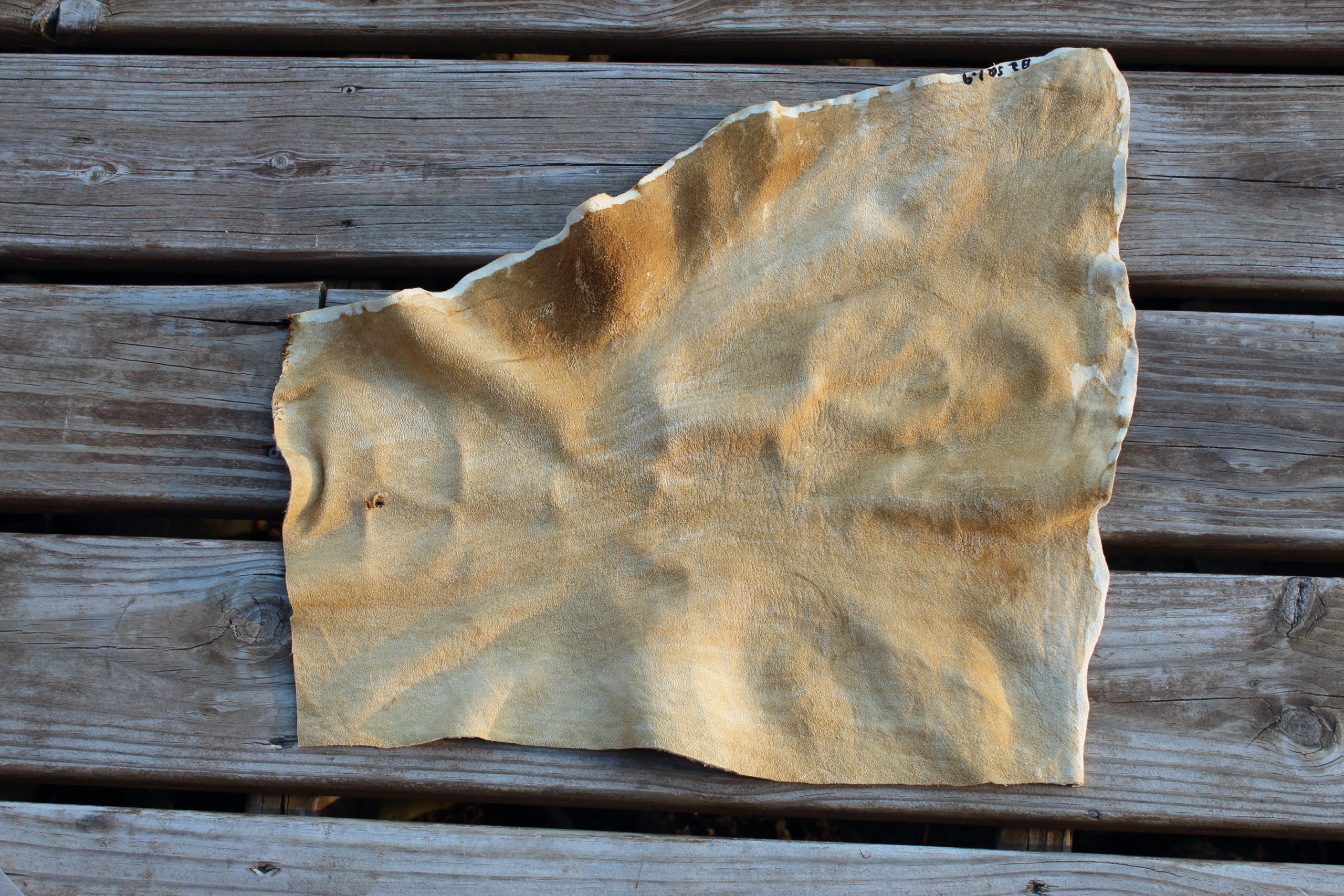

Hides can be dried for storage, either loose or stretched out in a wooden frame. But if your storage conditions are above freezing, your best bet is to dry the hide. They can also be stored outdoors in sub-freezing weather. This is best accomplished if you have access to a deep freezer. Raw fresh hides, either fleshed or un-fleshed, can be frozen for years. Which is great to let the dogs chew on, but not so great for making clothes.
BRAIN TANNED HIDES SKIN
If the skin just lies there and dries out, brains or no brains, the glues in the skin naturally set and you’ll end up with rawhide (more on that later). But this stretching action while the brains are drying creates leather that is soft and stretchy, like chamois cloth. If this all sounds like a lot of work, you’re right-it is. This may take one hour or several depending on the pelt size and thickness, as well as the humidity and air movement around the skin. While still slightly damp, begin stretching the hide in all directions to break up the skin and soften it. Soak the hide in the brain soup for 2 to 8 hours. Roll the skin up in the damp towel and set it aside. Once you’re done, dampen a towel and wring it out. Don’t get your wet tanning solution on the fur side of the pelt as it may cause the hair to slip out. Get to work: Lay the pelt on a flat surface and use your fingers to work the brain solution over the skin until thoroughly covered.
BRAIN TANNED HIDES HOW TO
RELATED: How to Brain-Tan a Deer Hide in 8 Steps Fleshing can be done in different ways, but I prefer to scrape with the square edge on the back of a drawknife handle, while pressing the hide against a smooth log for support. In that case, use your scrapings for trap or fish bait. If the hide has been lying around for a few days (or for too many hours, in warm weather), the meat and fat pulled from it may no longer be safe for human consumption. If the hide has just been peeled from a fresh kill, the meat and fat can be scraped off the skin and thrown into a soup or stew. You’ll need to scrape all of the meat and fat off the hide as thoroughly as possible. Fat will become rancid, and also contribute to decomposition. Meat will rot and lead to the decay of the skin. The most essential part of your prep work is called “fleshing,” which is the removal of meat and fat from the hide. However you intend to transform your animal skins, there’s one universal step that you’ll need to take to prepare them for tanning, rawhide, or storage. Cleaning the Hide Before a hide or skin can be tanned or stored, you’ll have to remove as much of the meat and fat as you can. These longer hairs are protective, and many mammals can raise their guard hairs as a threat display when alarmed.


These hairs usually have the most color and gloss, giving the animal it’s markings and color. These stick out through the other hairs, and are the most visible part of the coat. Guard hair: Sometimes called the topcoat, guard hairs are longer, straighter, and typically coarser than the other hairs.

There are typically more down hairs in an animal’s coat than any other hair type, and these are primarily used for thermoregulation (creating an insulating layer next to the skin). The hair that most people would recognize as fur can have three layers, each one consisting of a different hair type.ĭown hair: This is the undercoat or innermost layer of the fur, consisting of wavy or curly hairs. Sheep, goats and a few other creatures grow the hair type that’s considered wool. It’s essentially a form of undercoat hair that is soft, curly, and never stops growing. Wool is another covering on the skin of an animal. Hair is also a hollow-shafted skin covering, like you find on a deer. Generally, the word “hair” is applied to humans and “fur” is used for animals, though some tanners will say that fur is a solid-shafted hair, like you’d have on a furbearer. These skin coverings are one of the features that differentiate mammals from other creatures (like birds or reptiles). Hair, fur, and wool are all made from the same substance (keratin) and are chemically indistinguishable from each other. Wool The hairs that grow on animal skins may have some very different names and features.


 0 kommentar(er)
0 kommentar(er)
